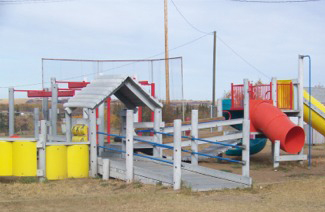为了便于大家更好的进行学习和备考,小编为大家带来的2016年12月17日雅思阅读考试真题回忆,大家可以对了解一下在本次考试中阅读题目有哪些,随后小编会为大家带来详细的答案解析资料。
2016年12月17日雅思阅读考试真题passage1:家庭替代疗法
2016年12月17日雅思阅读考试真题passage2:影响孩子成长的因素
The Impact of Environment to Children
A
What determines how a child develops? In reality, it would be impossible to account for each and every influence that ultimately determines who a child becomes. What we can look at are some of the most apparent influences such as genetics, parenting, experiences, friends, family relationships and school to help us understand the influences that help contribute to a child's growth.
B
Think of these influences as building blocks. While roost people tend to have the same basic building blocks, these components can be put together in an infinite number of ways. Consider your own overall personality. How much of who you are today was shaped by your genetic inheritance, and how much is a result of your lifetime of experiences? This question has puzzled philosophers, psychologists and educators for hundreds of years and is frequently referred to as the nature versus nurture debate. Generally the given rate of influence to children is 40 % to 50%. It may refer to all of siblings of a family. Are we the result of nature (our genetic background) or nurture (our environment)? Today, most researchers agree that child development involves a complex interaction of both nature and nurture, while some aspects of development may be strongly influenced by biology, environmental influences may also play a role. For example, the timing of when the onset of puberty occurs is largely the results of heredity, but environmental factors such as nutrition can also have an effect.
C
The From the earliest moments of life, the interaction of heredity and the environment works to shape who children are and who they will become. While the genetic instructions a child inherits from his parents may set out a road map for development, the environment can impact how these directions are expressed, shaped or event silenced. The complex interaction of nature and nurture does not just occur at certain moments or at certain periods of time; it is persistent and lifelong.
D
The shared environment (also called common environment) refers to environmental influences that have the effect of making siblings more similar to one another. Shared environmental influences can include shared family experiences, shared peer groups, and sharing the same school and community. In general, there has not been strong evidence for shared environmental effects on many behaviors, particularly those measured in adults. Possible reasons for this are discussed. Shared environmental effects are evident in children and adolescents, but these effects generally decrease across the life span. New developments in behavior genetic methods have made it possible to specify shared environments of importance and to tease apart familial and nonfamilial sources of shared environmental influence. It may also refer to all of siblings of a family, but the rate of influence is less than 10 per cent.
E
The importance of non-shared environment lay hidden within quantitative genetic studies since they began nearly a century ago. Quantitative genetic methods, such as twin and adoption methods, were designed to tease apart nature and nurture in order to explain family resemblance. For nearly all complex phenotypes, it has emerged that the answer to the question of the origins of family resemblance is nature-things run in families primarily for genetic reasons. However, the best available evidence for the importance of environmental influence comes from this same quantitative genetic research because genetic influence never explains all of the variance for complex phenotypes, and the remaining variance must be ascribed to environmental influences. Non-shared environment, it may refer to part of siblings of a family, the rate of influence to children is 40 % to 50%.
F
Yet it took many decades for the full meaning of these findings to emerge. If genetics explains why siblings growing up in the same family are similar, but the environment is important, then it must be the case that the salient environmental effects do not make siblings similar. That is, they are not shared by children growing up in the same family-they must be 'non-shared'. This implication about non-shared environmental import lay fallow in the field of quantitative genetics because the field's attention was then firmly on the nature-nurture debate. 'Nurture' in the nature-nurture debate was implicitly taken to mean shared environment because from Freud onwards, theories of socialization had assumed that children's environments are doled out on a family-by-family basis. In contrast, the point of non-shared environment is that environments are doled out on a child-by-child basis. Note that the phrase 'non-shared environment' is shorthand for a component of phenotypic variance-it refers to 'effects' rather than 'events', as discussed later. Research in recent years suggested that the impact from parents will be easy to be interrupted by the influence from the children of the same age .That also showed that variations of knowledge that children get from other culture is increasing. A number of interests between, whatever, fathers and mothers or parents and their children are conflicting.
G
Because siblings living in the same home share some but not all of the potential genetic and environmental factors that influence their behaviors, teasing apart the potential influences of genetic and non-genetic factors that differentiate siblings is very difficult. Turkheimer and Waldron (2000) have noted that non-shared environmental influences——which include all of the random measurement error——may not be systematic, but instead may operate idiosyncratically and in ways that cannot be ascertained. Thus, the question is whether or not quasi-experimental behavioral genetic designs can be used to actually identify systematic non-shared environmental mechanisms cross sectionally and longitudinally. This is the impetus for the current study.
Questions 14-18
Complete the table now. Choose No More Than Three Words from the Reading Passage for each answer.
Type of Impact to ChildrenRange of Reference to SiblingsRate of Influence
14 background from parents and familyIncluding to all of siblings40%-50%
Shared Environment to 15 less than 16
17 to part of siblings 18 -50%
Questions 19-21
Complete the following summary of the paragraphs of Reading Passage, using No More Than Three Words from the Reading Passage for each answer. Write your answers in boxes 19-21 on your answer sheet.
Research in recent years illuminated that the impact from parents will frequently be 19 by the peers pressure. It was also indicated that 20 of knowledge that children learned from other culture is increasing. Study has found quantities of competing 21 between parents and children or even between parents themselves.
Questions 22-25
Do the following statements agree with the claims of the writer in Reading Passage?
In boxes 22-25 on your answer sheet, write
YES if the statement agrees with the claims of the writer
NO if the statement contradicts the claims of the writer
NOT GIVEN if it is impossible to say what the writer thinks about this
22. The more children there are in a family, the more impacts of environment it is.
23. Methods based on twin studies still meet unexpected differences that can not be ascribed to be purely genetic explanation.
24. Children prefer to speak the language from the children of the same age to the language spoken by their parents.
25. The Study of non-shared environment influence can be a generally agreed idea among researchers in the field.
Questions 26
Choose the correct letter, A, B, C, or D.
Write your answers in boxes 26 on your answer sheet
26 According to this passage, which comment is TURE about the current Study of non-shared environment influence to children
A. a little biased in nature
B. not sufficiently proved
C. very systematic
D. can be workable
以上是小编为大家分享的2016年12月17日雅思阅读考试真题回忆,希望能够对大家有所帮助。

















